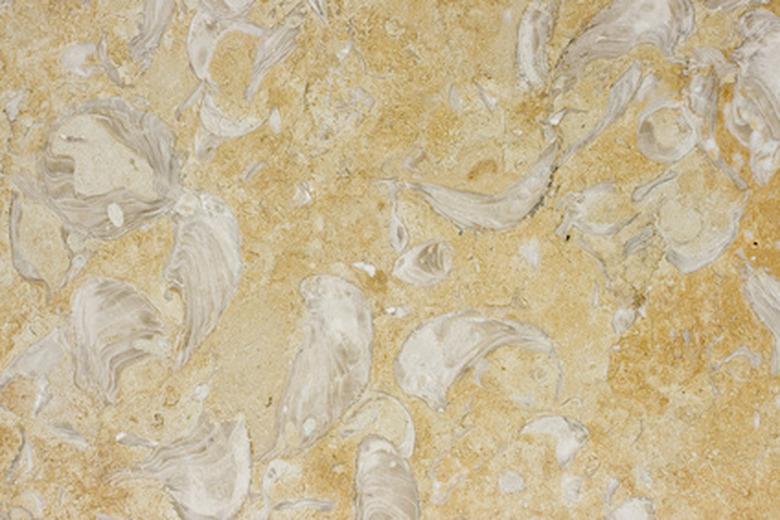How To Tell What Kind Of Tile Flooring Is Installed
If you have a tile floor installed in your home and you're wondering how to treat it, you need to know what type of tile it is. While you may not be able to identify the tile's manufacturer without having access to a loose piece, you can classify the tile as a type of stone, porcelain or ceramic so you can treat it accordingly.
Step 1
Pour a small amount of water on your tile floor, and check for absorption. Stone tiles and some types of terracotta tiles absorb water. Inspect the tile to see if it became darker where the water lay. If the tile has darkened in any part, the water has been absorbed.
Step 2
Check for variation, coloration and markings. No two pieces of stone tile will ever appear the same way twice. Marble tiles may have veins running through them, while travertine will have holes that have been filled with a resin. Run your fingers over areas of different color; if they are smoother, the tile may be resin. Limestone tiles may have fossils, while granite may have a tightly packed granular pattern. Ceramic and porcelain tiles can be more uniform.
Step 3
Look for the presence of glaze. Get close to the tile, and look at the edge where it meets the grout. You may observe a thin line just above the joint if the tile is covered in glaze. Many types of ceramic tile have glaze on top, while stone and most porcelain tiles do not.
Step 4
Feel the tiles for texture. A fairly uniform texture—whether polished, matte or distressed—may signal a porcelain tile floor. Natural stone tiles will have small pits, fissures and abnormalities that porcelain will not have.
Step 5
Measure the tiles. If you are concerned about the presence of asbestos tile in your home, look for tiles made of vinyl or linoleum that measure nine or 13 inches in size. If these tiles were installed prior to the 1970s, they most likely contain asbestos, although a professional will have to conduct a chemical test to be sure.
